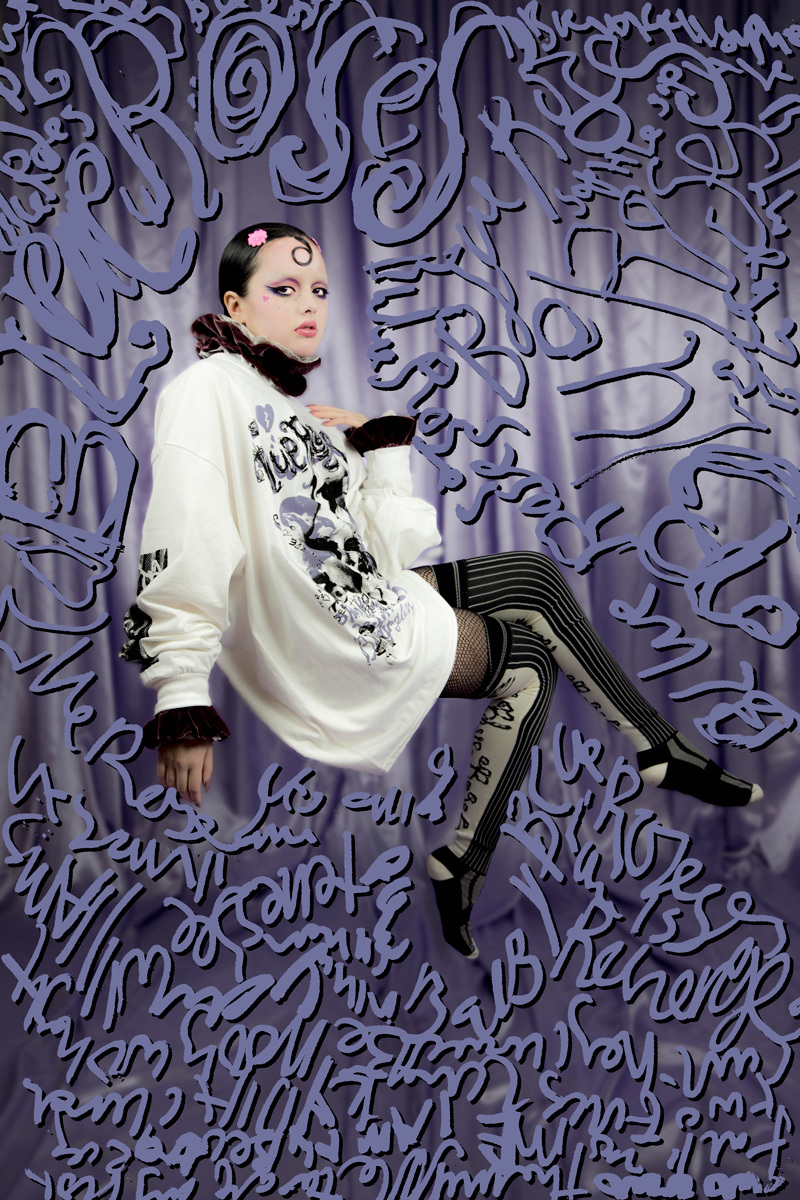Like his work, the story of Edward Meadham has its share of fairytale elements. Not in the Disney way where there’s always a happy end in sight, but in the unnerving Germanic tradition that makes no promises but leaves you begging for more. After a considerable break from fashion, today the 35-year-old designer prodigy returns with a new brand, Blue Roses, sold exclusively at Dover Street Market in London and New York. As with everything in Ed’s fairytale realm, it’s a bittersweet comeback: brilliant news for an industry, which needs his otherworldly talent and astute points of view more than ever, but which also left one of its most applauded designers jobless for almost two years after Meadham Kirchhoff – the celebrated label he ran alongside Benjamin Kirchhoff for seven years – went into insolvency in late 2014. Over tea in his sitting room the week before the launch, his expectations are the product of that contradiction. “It’s still got all the elements and language that were always there, I just don’t know if people expect it to be like these lovely dresses and this whole thing, because it’s not,” he says, pouring tea from a tiny floral teapot, which goes perfectly with his ration chic Dalston council flat interior; very Great Depression but warm and welcoming, with a menagerie of sleeping cats and his beautiful Chihuahua, Trojan.

Blue Roses is a deluxe t-shirt and hoodie line that also features ruff and cuff accessories—basically the Edward Meadham take on the urban luxury the internet can’t get enough of now, but for anyone who remembers his epic sensory overload from collections past, it’s so much more. He doesn’t like that categorization, either. “But in reality, since I never leave the house and I don’t have any clothes left, I actually live in a fucking hoodie half of the time, anyway,” he shrugs, on this occasion draped in a fluffy white jumper and white pearl necklaces and earrings with Victorian pendants. “I’ve always done t-shirts, even if it wasn’t necessarily things that people remember. It’s the most versatile garment in the world.” Apart from a glitter top that riffs on an evergreen from the spring/summer 09 Meadham Kirchhoff collection, Blue Roses is not a greatest hits line but another chapter for the designer, who has covered his new garments in “the various graphic-y things I’ve always done: collages, re-coloring things,” he explains. “There’s lots of elements of Courtney’s old flyers from the early Hole shows, and all the things I’ve always liked.” A brief summary of that would take you through Renaissance ceremony to Marie Antoinette madness, gothic nuns and riot girls, and a fair share of British chintz.
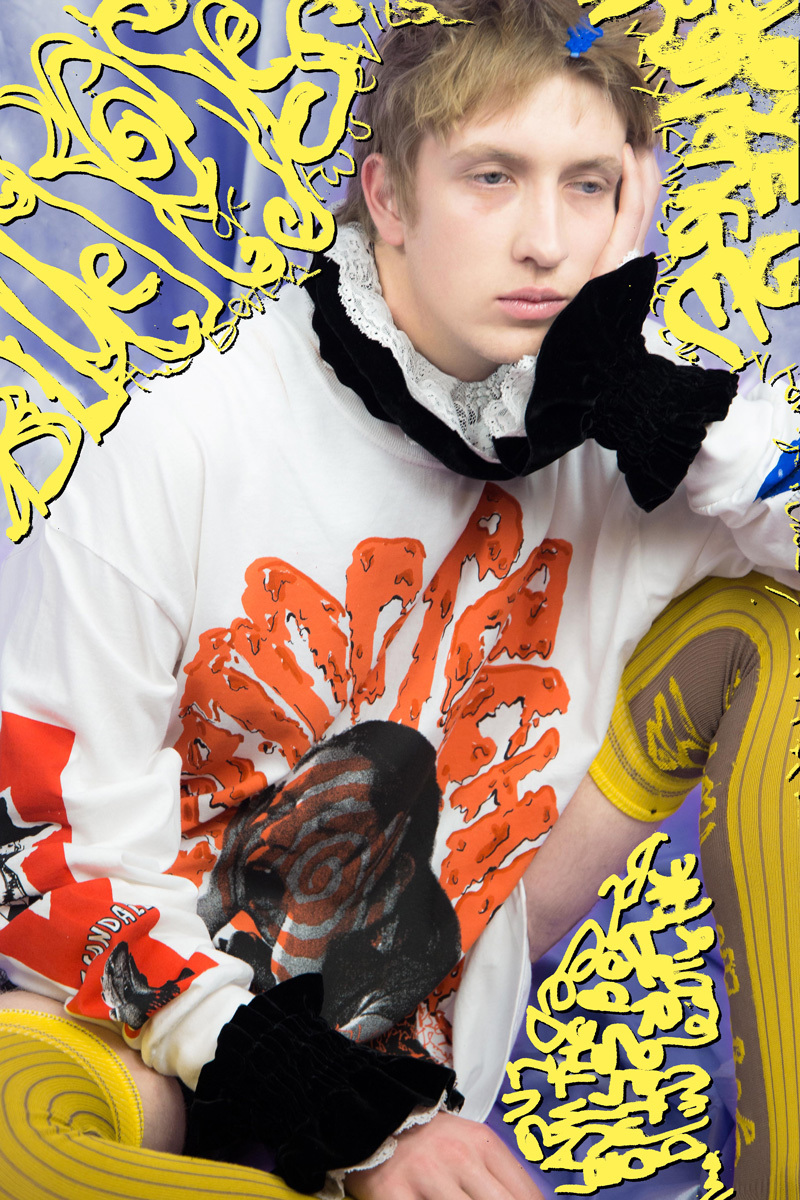
At London Fashion Week and beyond, Meadham Kirchhoff represented a celebration of fantastical freaks and couture-like craftsmanship, all wrapped up in a brand that stood for so much more than the hyper-referential fashion it produced, and could barely sell at the prices that came with its majestic production. It was the ultimate freedom of expression, of individuality and diversity, of acceptance and inclusivity; gilded by Ed’s volatile opulence, his great aggression and even greater romance. His return to the fashion scene comes at a politically loaded time, which he says calls for considered activism. “There’s a lot of kids with points to make and no ability to make a seam or pattern,” he notes, eyes rolling. “I’m sick of everything being over-politicized and politics being attributed to everything nowadays. Sometimes I wish we could just make pretty things again. I write my little things and I don’t necessarily know what they mean, but I feel like ‘The Blind Leading the Bleeding’ seems kind of appropriate in this day and age,” he argues, referring to one of the motifs in the collection.
The name Blue Roses comes from a quote in Tennessee Williams’ A Glass Menagerie. “The girl, Laura, is described as ugly and a bit crippled and was bullied through high school, and the jock she fancies asks her what’s wrong with her. She says she has pleurosis, and he thinks she says ‘blue roses’,” Ed recounts, typically deadpan. In April 2015, just months after Meadham Kirchhoff went into insolvency, he suffered extreme blood poisoning, leaving in him a coma for weeks and very nearly killing him. “It still seems like two minutes ago. I had so many hallucinations that I was convinced they were real for a very long time, about people kidnapping me and all this weird shit. Some of it was hilarious, some quite terrifying,” he recalls. “In a way it put a full-stop to lots of things. My life got broken into before and after I went to hospital. I still constantly refer to things as ‘before’ or ‘after hospital’. It was the end of something and the beginning of—well, nothing really began for a very long time, but it put a division in some of the shit in my life. With that came the end of a load of really bad, negative influences.”

Many were rooted in the Meadham Kirchhoff brand, the archive of which was seized from the studio while Ed was in hospital and sold off in massive sample sales, which some tried to prevent to little avail. “What annoys me most is the misconception that it was sold off as part of the insolvency and it wasn’t. It was sold off by somebody, who had nothing to do with anything apart from being the person we rented this studio from—whom we didn’t owe anything to, and that makes no sense,” he explains. “If it had been sold off and some of the people we damaged had been recompensed even a tiny bit with the proceeds from it, then that would be one thing,” he continues, referring to those affected by the bankruptcy. “But people making, I would imagine, at least £100,000 – because several people bought small selections for £30,000 – who had nothing to do with it and weren’t owed something is kind of sick.” It didn’t, of course, make it any less painful that ‘fans’ were parading around East London in their newly acquired sample sale goods. “I’m a lot more over it now but there was a point where I did try to step on a few people’s feet when they were wearing my shoes,” he grins.
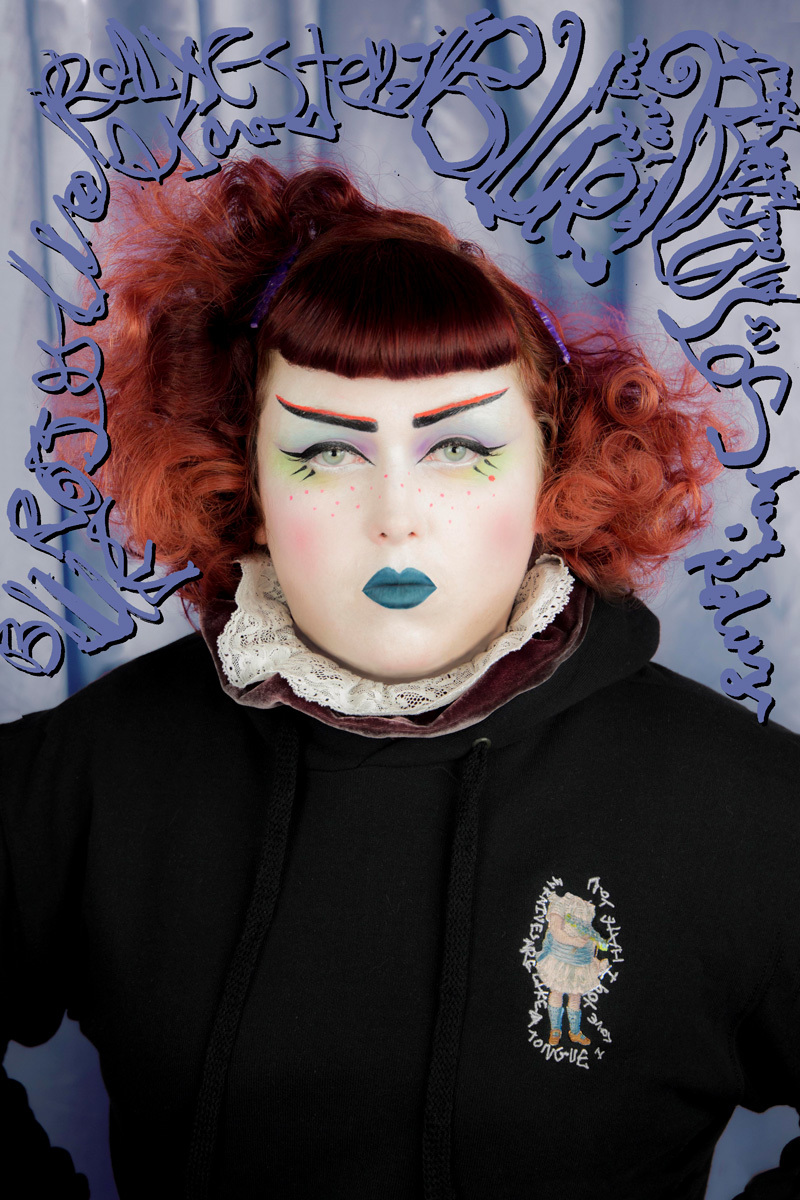
Ed spent the following year in the isolation that was always part of his character, a contrary and formidable creature that some found terrifying—even if his former employees always painted a picture of a creative soul, who’d bake cakes for them and spend hours meticulously decorating the studio for Christmas. Outside in the real world – where he rarely ventured, the victim of verbal and physical abuse due to his princely (and often princess-y) dress sense – Ed earned a reputation fit for fashion legend. It was the image of the difficult recluse, who hisses at passersby, but to those of us who knew him and earned his trust, he was the boy wonder: kind, intelligent, witty, and honest to the point of fragility. “I didn’t used to speak to anyone at all, ever, and I don’t really understand what people are actually imagining about me. I’ve always been really nervous and uncomfortable, but I didn’t scream at people in the old days.” Sure, some of it was deserved – inexhaustibly creative people aren’t easy – but Ed’s demeanor had more to do with a tough façade built out of necessity, and a disdain for the air-kissing practiced by a fashion industry he found fake.
“I got more and more insane in those days,” he says of the Meadham Kirchhoff years. Post-coma, Ed’s mood and outlook began to change. Thanks in part to his boyfriend Ian, whom he’d only just started dating before it happened, it seemed he found a renewed sense of optimism. “I’m a lot calmer and better and stuff, but it still scares me to have to go and be seen by people and be around them.” When, this summer, the creative director Ronnie Newhouse of the fashion agency House + Holme and Adrian Joffe, President of Dover Street Market, approached him to create a new brand for the store, Ed didn’t want it to bear his own name. “I guess I kind of wanted to disassociate myself from it a little bit.” Why? “I guess I feel a lot of shame about my name in a way.” Why? “Because of my history.” The work that you did? “No, but it’s tainted.” It’s his warped understanding of the industry’s view of him in the wake of his insolvency, which was hardly made better by the fact that he wasn’t snapped up by a big brand the way most of us had counted on. “It did get to the point where I was sick of random people telling me how talented I was, yet I’m still sat here,” Ed says, gesturing at picturesque Dalston.
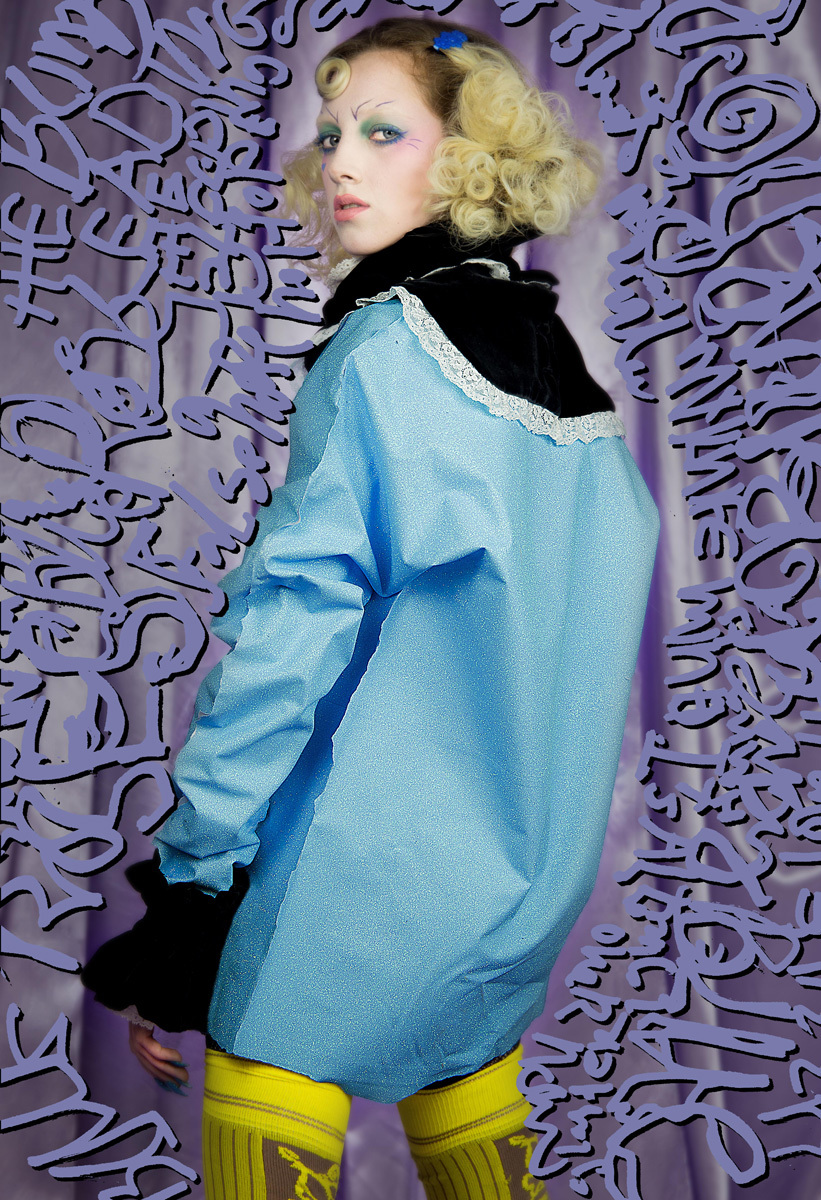
Apart from an amazing guest appearance designing dresses for shoe designer Sophia Webster’s fall/winter 16 collection, things remained quiet on the job front. “I did wonder if I was also mutually abandoning fashion. Last May I went to the RCA show and there were loads of people there, who used to be nice to me in the old days and they all looked at me and walked away. It was like, ‘Are you not allowed to speak to failures?’ Years ago, before any of the Meadham Kirchhoff shows that anyone cared about, there were a couple of years when no one liked what I was doing. People at that point stopped speaking to us, and when people liked it again they were all coming back to the studio all the time to fill their bags with shoes and clothes. It is very like that.” With Blue Roses, run as a brand under Dover Street Market, they’ll have to pay for their Meadham merchandise from now on. Rather than the skyrocketing price points of his former work, however, Ed wants Blue Roses to be as affordable as possible. “I would love to just make the most gorgeous things, but at this point it seems kind of pointless,” he says. “No one I know has any money at all – I certainly don’t – and so it seems ridiculous. I don’t know who in the world has the money to buy clothes at the prices they come.”
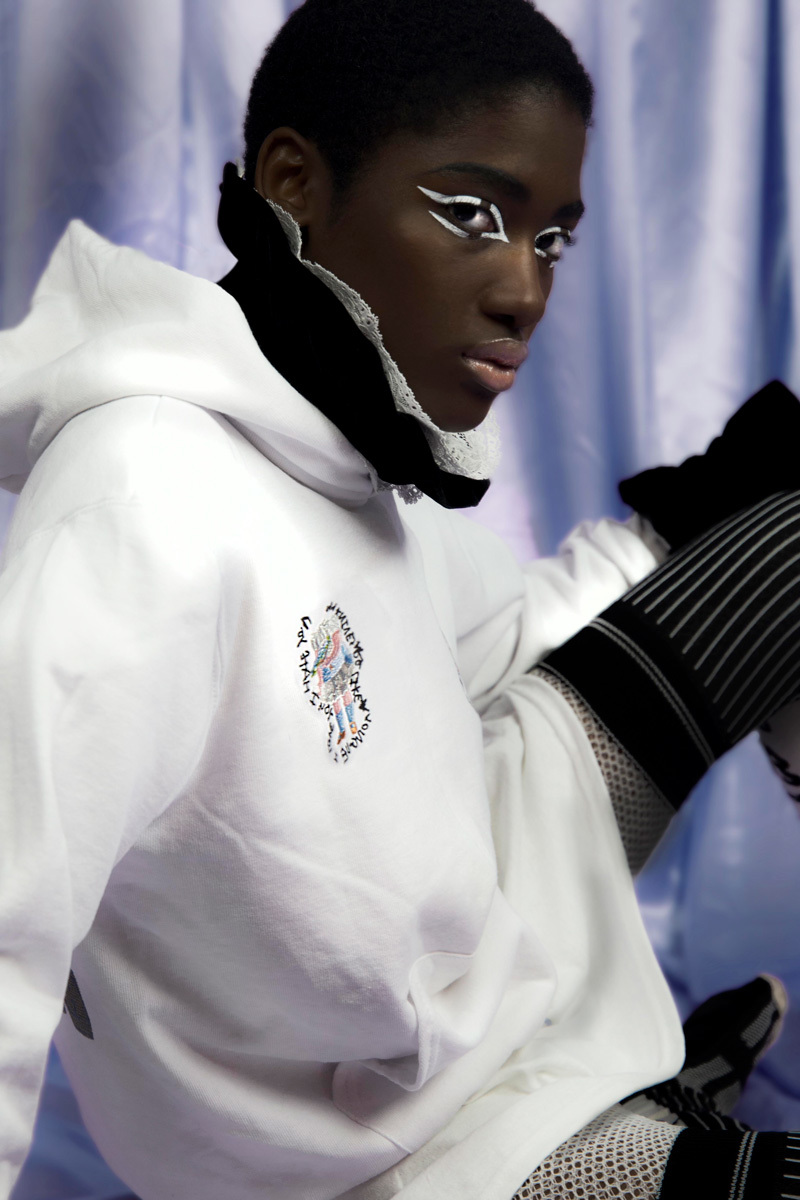
Those new Edward Meadham prices will be written on foldout swing tags featuring his updated Love/Hate List—first introduced at the last-ever Meadham Kirchhoff show. Making the new edition’s hate directory are Donald Trump, Theresa May, fish, comas and “most people”. On the Love side, it’s girls, gays, dykes, and weirdos, Christmas, Laura Ashley, Elizabeth Taylor and freedom of expression. “To be honest,” Ed says, “I actually found it easier to do the love list, which I thought was strange because I’m not necessarily…” He looks down. Has Edward Meadham turned into a lover? “No,” he protests, then pauses. “I don’t know.” Strolling down the street with him in his magical outfit, trying to find an Uber driver lost in the maze of council houses, something has definitely changed. It’s not just that renewed sense of optimism waking up from a coma will do to you, but a reminder that so many people out there get him and what he stands for. “You know how I’m always contrary, so it might get less political,” he muses at one point, talking about Blue Roses. “I always wanted to put some beauty into the world. I tried very hard.”
Credits
Text Anders Christian Madsen
